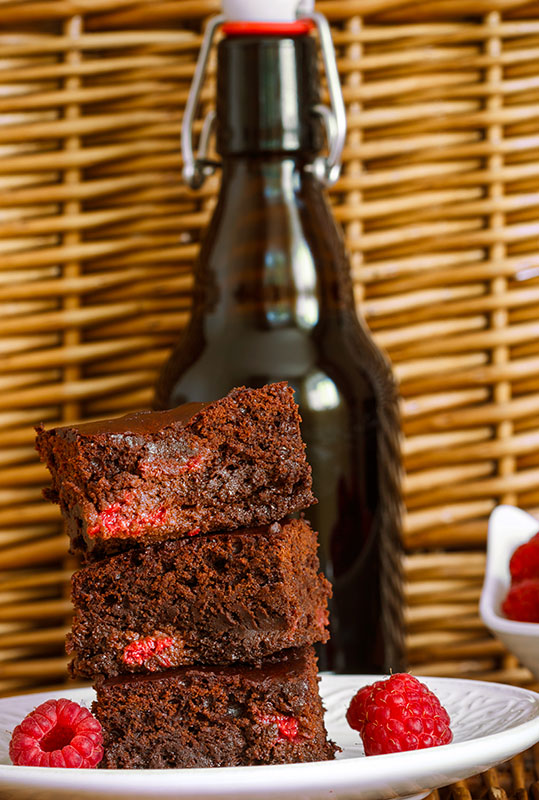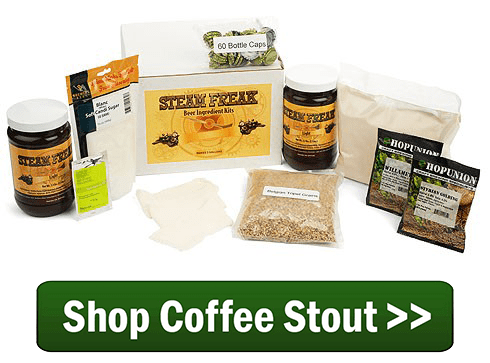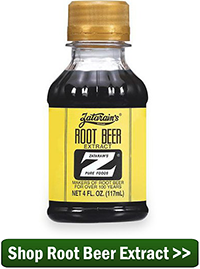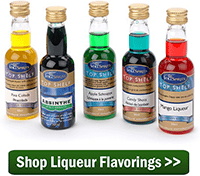 Did you know that you can bottle your homebrew beer with flavored liqueurs?
Did you know that you can bottle your homebrew beer with flavored liqueurs?
Adding liqueur at bottling time is one way of adding more flavors to your homebrew, especially when making a fruit beer. Liqueurs are lower-alcohol spirits flavored with fruit, herbs, spices, or nuts, and then sweetened. These concoctions are normally used for flavoring cocktails or coffee, but flavored liqueurs can be used for homebrewing, too.
To help get your creative juices flowing, here are some of the common flavored liqueurs that have potential for adding to homebrew:
- Amaro (herbal)
- Amaretto (almond)
- Chambord (raspberry)
- Cointreau (orange)
- Crème de cacao (chocolate)
- Crème de menthe (mint)
- Crème de mûre (blackberry)
- Crème de cassis (black currant)
- Curaçao/Triple Sec (bitter orange)
- Fernet (herbal)
- Frangelico (hazelnuts and herbs)
- Grand Marnier (orange)
Try doing a taste test to see which flavors might work with different beer styles. In his book, Radical Brewing, Randy Mosher mentions having success with Triple Sec, crème de cacao, and Frangelico, among others.
Tips for Adding Flavored Liqueurs to Homebrew
In Radical Brewing, Randy Mosher offers a number of tips for adding liqueur to homebrew:
- Avoid creamy liqueurs – These will not have a good affect on your beer.
- Add spices if desired – Optionally, add additional spice flavor by soaking the spices in the liqueur before mixing into the beer.
- Do a taste test first – Measure out a small sample of beer and add the liqueur in .1 mL increments. Keep in mind that most of the sweetness in the liqueur will ferment out. Scale up when you find the right ratio. For example, if .1 mL liqueur per 1 ounce beer is the magic number, multiply by 128 (ounces in a gallon) then by 5 (gallons in a batch) to arrive at 64 mL of liqueur.
- Plan for an increase in alcohol content – Two cups of a typical liqueur will add about 1% ABV to your five-gallon batch of homebrew. Plan your beer recipe accordingly.

How to Bottle Your Homebrew with Flavored Liqueurs
Since liqueurs are sweetened, we need to account for the added sugar. Mosher offers the following instructions for bottling homebrew with liqueur:
- Measure the specific gravity of the liqueur with your hydrometer and convert to degrees Plato (% sugar).
- Compensate for the specific gravity of the alcohol present, which is less than 1.000. Multiply the proof by .106 and add this to the specific gravity of the liqueur. This number will give the total percentage of sugar in the liqueur.
- Take the weight of the liqueur being added and multiply it by the sugar percentage from above. This will give you the weight in sugar being contributed by the liqueur.

Alternatively, you can take the weight needed for priming and divide by the sugar percentage (as a decimal) to arrive at how much liqueur to use for bottling. Just keep in mind that depending on the flavor of the liqueur, you may or may not want to use that much.
Let’s work through an example:
Say you’re brewing Captain Cogsworth Coffee Stout, but instead of priming with coffee and sugar, you use eight ounces (by weight) of a 40 proof coffee liqueur.
- Measuring the specific gravity of the liqueur, you get 20˚ Plato.
- Multiply the proof (40) by .106 = 4.24˚P
- 20 + 4.24 = 24.24˚P
- 8 (weight of liqueur in ounces) * .2424 (percent sugar in liqueur) = 1.94 oz. sugar
In this example, the 8 ounces (by weight) of coffee liqueur contributes the equivalent of 1.94 oz. of priming sugar. Adjust your priming sugar addition accordingly.
Alternatively, if you want to prime with just liqueur, take the total amount of priming sugar and divide by the total sugar percentage from above:
5 oz. priming sugar / .2424 = 20.63 oz. liqueur (by weight)
Add 20.63 ounces (by weight, not volume) of the liqueur at bottling time.
You can also experiment with soda pop flavorings if you don’t want to worry about a change in alcohol content or calculating sugar content. These extracts don’t contain sugar, so either add them during secondary fermentation or mix with your priming sugar solution at bottling time to contribute unique flavors to your homebrew.
You can also play around with liqueur flavorings. These are flavorings designed to be added to a spirit to make a flavored liqueur. Instead of bottling homebrew with flavored liqueurs, you can add just the concentrated liqueur flavoring instead.
—–
David Ackley is a beer writer, brewer, and self-described “craft beer crusader.” He holds a General Certificate in Brewing from the Institute of Brewing and Distilling and is founder of the Local Beer Blog.
